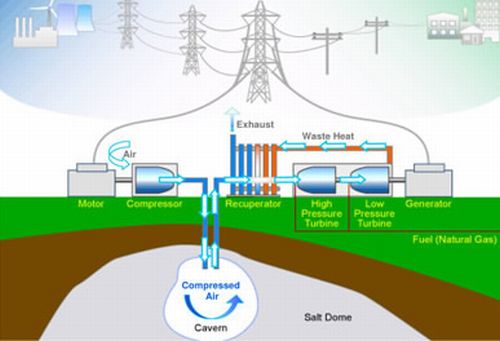
The future as we all know is dependent on renewable sources like wind energy which has grown manifolds and contributes to 1% of the total US energy supply. As in Spain and Denmark, the day is not far away when wind energy would comprise 10% of the total energy supply.
But what happens when the demand is low and the supply is high? How do we bank the energy for future consumption?
Some 3000 feet below the wind fields of Corn and Soya bean, outside Dallas Center, Iowa, USA, a lot of activity is taking place. The future of renewable power storage is bubbling beneath and is slowly making its place.
The air from the wind fields is pumped through a compressor into the porous sandstone, which acts like a giant balloon. Sealed from above in a deep well by a dense shale, the flow of air is reverted when need for power arises. The air then races back up through the pipe connected to a natural-gas-fired turbine, and raises the power efficiency by about 60%.
Started in 2003, the $200 million project is to finish by 2011 and then Iowa’s compressed air energy storage (CAES) project will be the first of its type to store green energy.
With a target of 268 megawatt system, talks are on with corporate giants to make this project a mammoth, worth 3000 megawatts of energy.
Search for more land to support this technique is on and it is estimated that 85% of the U.S. has underground salt domes to support the technique.
In an earlier post we did discuss about the high technology huge double decker sized batteries which will be able to store 1 megawatt of energy.
But the problems with the huge truck sized batteries are that they are costly and are rely on chemicals for functioning, there by negating the environmental friendliness to an extent.
Whereas Iowa’s compressed energy storage will store up to 20 weeks worth of air supply in earth’s womb while depending on lesser expensive machinery, inside the earth’s womb.
Via: Ecotality




